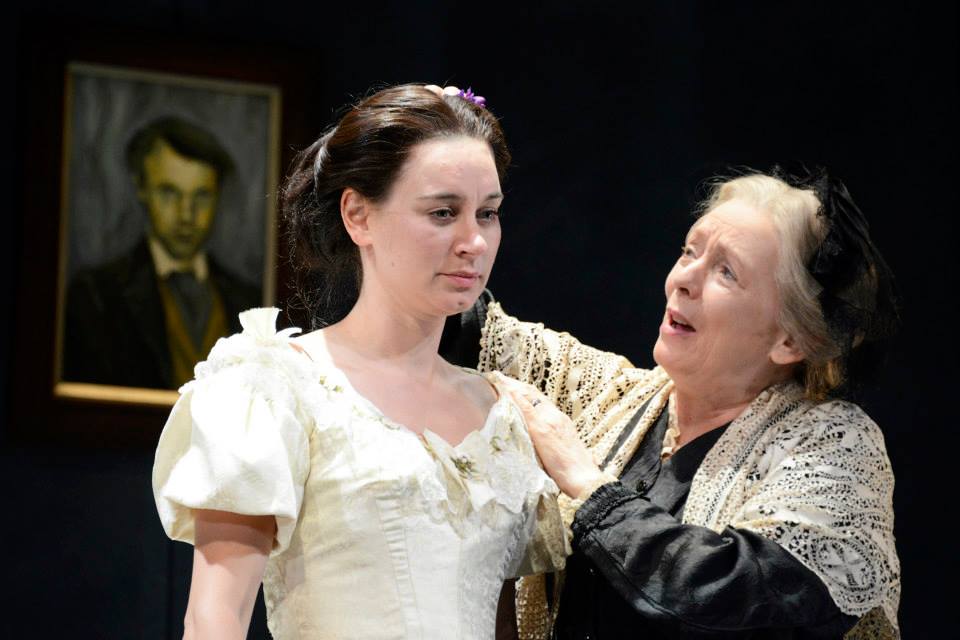I have a bit of a soft spot for Thérèse Raquin. I saw an excellent television dramatisation of it in 1980 and immediately became an Emile Zola devotee, reading most of his Rougon-Macquart series of books in quick succession. The author adapted his book for the stage in 1873 and since then there have been many stage versions. A new adaptation by Helen Edmundson is currently at the Theatre Royal Bath.
My dilemma is that I have to approach my review from different standpoints; as someone who is familiar with the book and as a theatre-goer whose opinion and impressions would be based solely on this production.
Firstly, let me say, that as theatre, Jonathan Munby’s production is superb. Visually it is stunning with a simple, flexible, monochrome box set by Mike Britton that adapts brilliantly to what is required of it with the sides sliding in and out in a multitude of configurations. There is even a stream of water running along the front of the stage to represent the omnipresent River Seine which figures so largely in the story. The set is enhanced by some beautiful lighting by Oliver Fenwick and the excellent, forceful score by Dominic Haslam provides the ever-present, evocative mood music.
The numerous settings, furniture moves and costume changes make a virtue out of necessity with everything done very stylistically before our very eyes by what is effectively a costumed, bit-part-playing stage management team who are credited as the Ensemble. But they are much more than that. They actually have physical contact with the main protagonists; they are like ghosts, ever-present unseen forces manipulating and cajoling the characters to the story’s inevitable conclusion. In the second half there were some truly scary moments when the consequences of the dreadful deeds of Thérèse, and her secret lover Laurent, finally come home to roost.
Alison Steadman was convincing as the mother whose cotton-wool devotion stifles her son Camille and niece Thérèse to such an extent that it is bound to end in tears. I liked Pippa Nixon as the put-upon Thérèse who finally came into her own when the lid blew off her pressure cooker after meeting wannabe artist Laurent. I felt the son could have been a lot weedier and Hugh Skinner’s Private Pike characterisation was rather wide of the mark.
So much for my never-heard-of-it-before view.
The first chapter of Zola’s book is entirely devoted to a description of chez Raquin in the Passage du Pont-Neuf. The passage (arcade) is described as a “… narrow, dark corridor…paved with yellowish flagstones, worn and loose, which always exude a damp, pungent smell, and it is covered with a flat, glazed roofing black with grime…” and so it goes on – for pages. The author clearly thought it vital to establish the physical location of his story. It is this awful place that sets the scene and mood; it creates the oppressive environment which becomes even worse when you enter the family’s dwelling. So poor Thérèse is trapped on all sides, her oppression is all pervasive, inescapable. What’s a girl to do apart from embarking on a steamy affair in this steamy (damp) and seedy place?
Sadly, with this production/adaptation one did not feel at all the dirt and grime nor the physical oppression of the environment and consequently I do not feel it achieved its true potential. Which is a pity because, for the most part, it was very good indeed, bordering on brilliant. Just not true enough to the original – just not steamy or seedy enough. ★★★★☆ Michael Hasted 05/08/14
Photos by Nobby Clark


